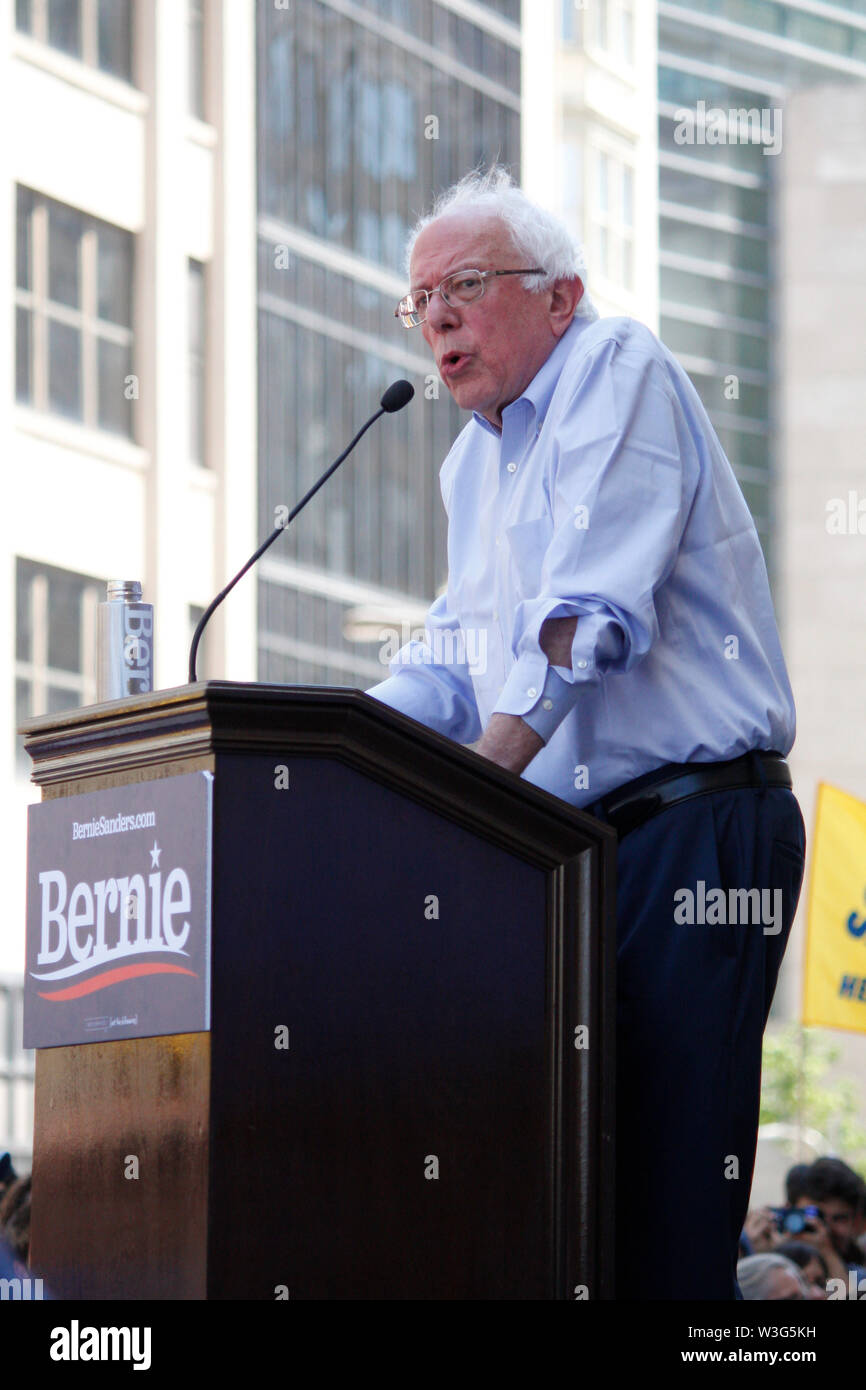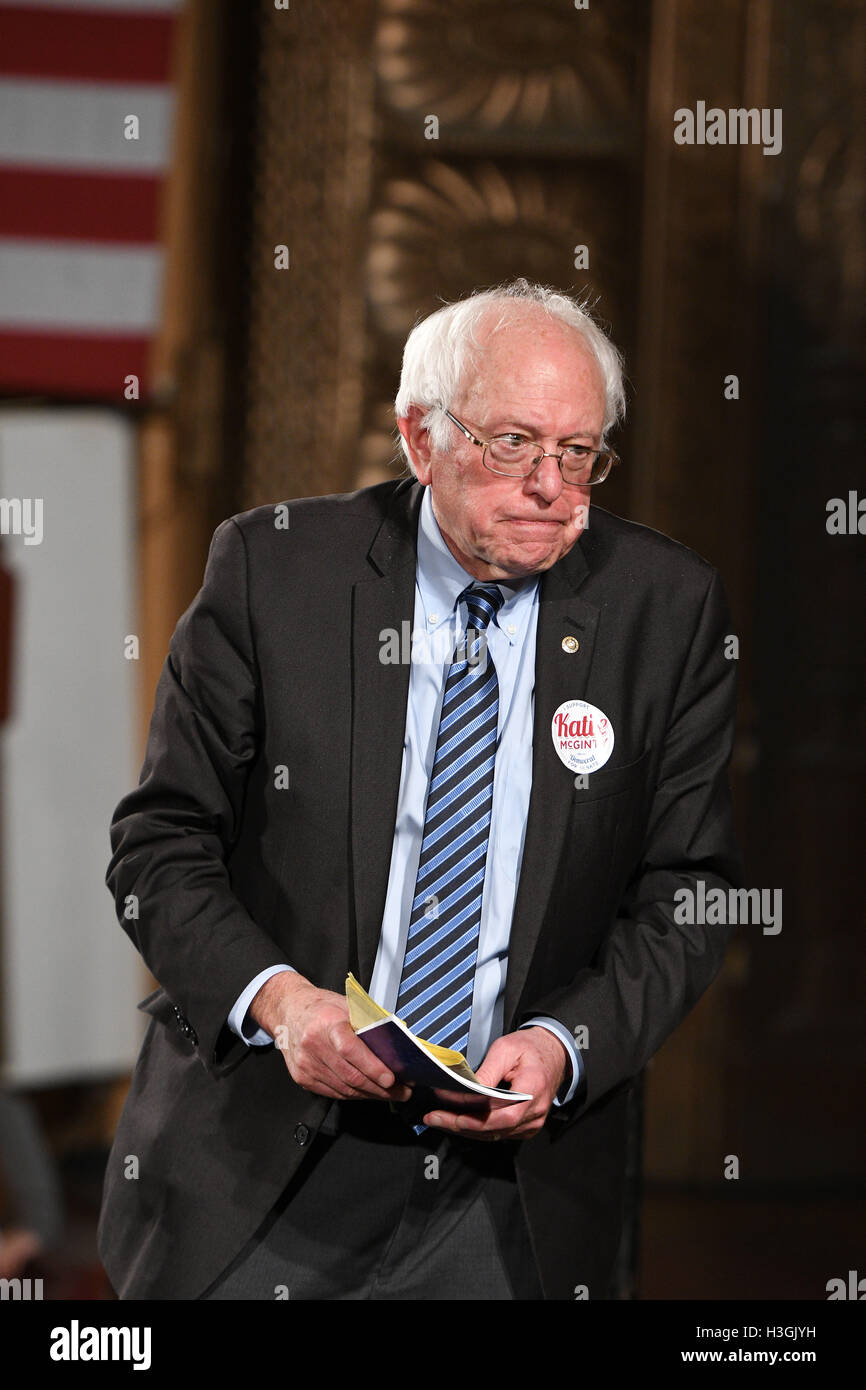Is the political landscape shifting, and are the voices of the working class gaining renewed strength? Senator Bernie Sanders' recent tour through Pennsylvania, culminating in a powerful May Day rally in Philadelphia, suggests a resounding yes, as he directly challenged the policies of former President Donald Trump and championed the rights of working Americans.
The City of Brotherly Love became a focal point on Thursday as thousands converged outside City Hall to hear Senator Sanders speak. The rally, a vibrant display of solidarity, was organized in conjunction with the Philadelphia AFL-CIO and served as a potent expression of dissent against what organizers described as the Trump administration's detrimental impact on working families. This event was not an isolated incident, but rather a key stop on a nationwide tour where Sanders has been actively speaking out against policies he believes favor the wealthy elite at the expense of the broader population. The atmosphere was electric, punctuated by chants, signs, and a shared sense of purpose, as individuals from various backgrounds united under the banner of economic justice and social equality. The heart of Philadelphia thrummed with the energy of a movement demanding change, and as Sanders took the stage, the crowd erupted, ready to receive the message.
| Category | Details |
|---|---|
| Full Name | Bernard Bernie Sanders |
| Date of Birth | September 8, 1941 |
| Place of Birth | Brooklyn, New York |
| Political Party | Independent (Caucuses with Democrats) |
| Current Position | U.S. Senator for Vermont |
| Education | University of Chicago (B.A. in Political Science) |
| Career Highlights |
|
| Key Political Positions | Democratic Socialism, Medicare for All, Free College Tuition, Climate Action, Income Inequality |
| Notable Legislation |
|
| Website | Official Senate Website |
The May Day rally in Philadelphia was more than just a gathering; it was a statement. It was a direct response to the policies of the previous administration, which Sanders and his supporters argue prioritized the interests of the wealthy. The choice of Philadelphia, a city steeped in American history and a strong tradition of labor activism, was deliberate. The city's connection to the founding principles of democracy and the ongoing struggle for workers' rights resonated deeply with the message Sanders sought to deliver. The demonstration aimed to highlight the perceived erosion of workers' rights and the growing economic disparities that have, for many, become increasingly problematic. The rally, held on International Workers' Day, underscored the global scope of the issues at stake, connecting the local struggles with a broader movement for economic justice around the world. The air was thick with a collective yearning for change, and the impassioned speeches reflected that mood.
The event, billed as For Workers, Not Billionaires, saw a diverse crowd of union members, immigrant rights advocates, and community allies fill the space surrounding City Hall. The gathering provided a platform for Sanders to articulate his critique of the previous administration's policies, with a focus on issues such as income inequality, healthcare access, and environmental protection. Road closures, which caused significant traffic disruptions, were a small price to pay for the passionate supporters in attendance, who turned the rally into a display of their determination to hold their leaders accountable. The choice of location and timing was strategic, capitalizing on the historical significance of May Day as a day of worker solidarity and resistance. This rally was a clear demonstration of the enduring relevance of these issues, as well as the ongoing fight for the rights of working people. The message was simple: the voices of workers deserve to be heard, and the pursuit of economic justice will continue.
The focus of Sanders' speech, as well as the broader sentiment of the rally, centered on perceived inequalities and policy decisions that the Senator saw as detrimental to the working class. Sanders has long advocated for progressive policies, including Medicare for All, tuition-free college, and a higher minimum wage, policies he believes would address the economic challenges faced by everyday Americans. The rally in Philadelphia provided him with a stage to further expand on these ideas and articulate how these policies, in his view, would provide solutions to the problems created by the previous administration's approach to governing. The event highlighted the contrast between the administration's policies and Sanders' vision of a society where the economy works for everyone, not just the wealthiest. It's within this context that the actions taken during the event, and the impact they had on the city, can truly be understood.
The impact of the rally extended far beyond the immediate location. As a result of the large turnout, a number of arrests were made. The widespread media coverage further amplified the message, reaching audiences far beyond the confines of Philadelphia. The demonstration was part of a broader nationwide day of action, with similar rallies and protests occurring in nearly 1,000 cities across the country. The events underscored a sense of shared frustration and a desire for a government that represents the interests of the people, reflecting the spirit of activism and the intensity with which this matter has been undertaken.
The choice of Philadelphia as a venue also underscores the strategic importance of Pennsylvania in the national political landscape. Pennsylvania, a crucial swing state, represents a microcosm of the economic and social issues that are being debated across the country. Sanders' focus on working-class issues and his criticisms of previous policies resonated with many voters in the state, providing a clear contrast to the agenda set forth by the previous administration. His decision to visit the state demonstrated his recognition of the importance of appealing to the needs and concerns of working families, especially in areas where economic anxieties are prevalent. This was not a mere political tactic, but a deeply held conviction about the future of the American economy and society. The rally, therefore, was a key step in a broader attempt to build a movement for change and to mobilize voters around a progressive vision for the country.
The response to the rally, both in terms of attendance and media coverage, suggests a significant level of discontent with the policies and actions of the previous administration. Sanders' ability to draw such a large crowd, especially in a state like Pennsylvania, underscores the resonance of his message, and his commitment to issues such as economic justice and social equality. This focus has clearly struck a chord with a significant segment of the population. The rally's success serves as an important reminder of the potential for political organizing to mobilize diverse communities around shared values. The event demonstrated the power of collective action and the ability of individuals to come together to demand change. It remains to be seen how this energy will translate into lasting political change, but the Philadelphia rally has unquestionably marked a moment in the ongoing struggle to shape the direction of the nation.
The events in Philadelphia, and across the nation, are a clear indication that the debate over the future of the country's economic and social policies is far from over. The issues raised by Sanders and the protestors – income inequality, healthcare access, and the rights of workers – continue to be at the forefront of the political discourse. The rally in Philadelphia served as a reminder that the pursuit of a more just and equitable society is an ongoing process, one that requires the persistent engagement of citizens. The large turnout and the passion displayed at the event suggest a renewed commitment to this pursuit. The message to Washington and the nation was clear: the fight for working people is far from over, and the voices of those seeking change will continue to resonate throughout the political landscape.



